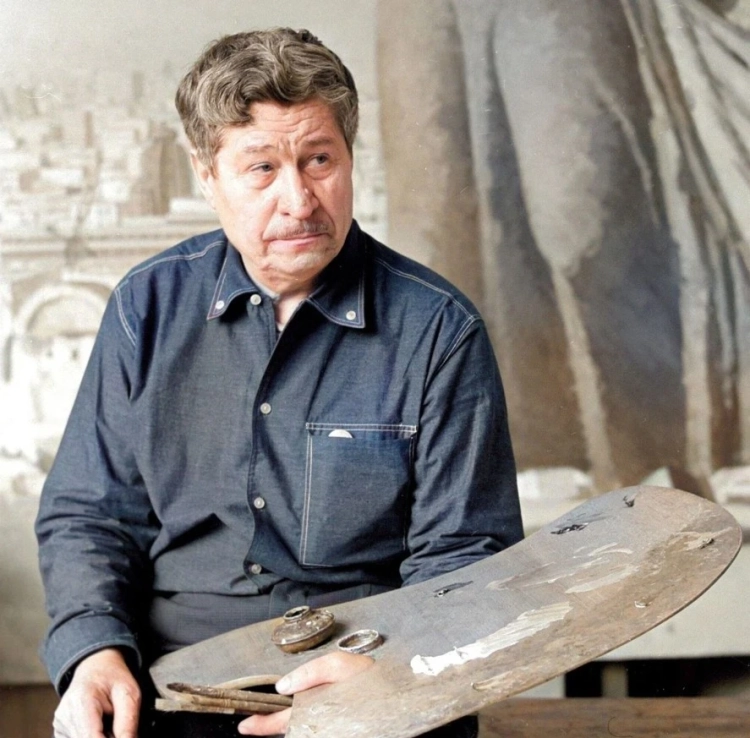The creativity of Gapar Aitiev in the 1960s and 70s was exceptionally fruitful: it was the peak of his landscape artistry. For Aitiev, as well as for S. Chuykov and other artists of the older generation in Kyrgyzstan, the foundation of the creative process was the work on plein air studies, which, due to their meticulous execution, could be equated to paintings, and often surpassed them in freshness of painting and emotional resonance.
For his compositional landscapes, Aitiev typically used a single study, in which the main spatial tasks, color and tonal relationships were already resolved. In his landscape paintings, the artist monumentalizes lyrical motifs through the size of the canvases and a clearer spatial solution, always alive and musically organized by linear and color rhythms. The evolution of his work went from genre to "pure" landscape. While in the beginning genre motifs were the basis of the artistic image, gradually the genre began to play a subordinate role to the landscape, although it continued to carry significant meaning and narrative weight, giving nature paintings a sense of habitation and warm "home" comfort.
Aitiev was the most consistent proponent of tonal painting among all Kyrgyz artists.
A master of precise tonal relationships, the artist managed to impart natural authenticity and a delicate rhythm of interdependence to the planes, horizontally positioned on the rectangle of the canvas. His compositions are constructed strictly and harmoniously, everything in them is measured in scale and form. The equilibrium achieved by the artist between the weight of the earth and the weightlessness of the air, between the immobility of forms and the measured movement of their interrelations in mass and light-shadow, creates a poetry of thoughtful contemplation and calm imagery.

The master felt admiration for nature while contemplating the living picture of a freshly plowed field with sunny glimmers on the turned-over clods of earth ("Autumn in the Chui Valley"). This feeling of love and respect for the land, which not only feeds us but also elevates our spirit, Aitiev conveys to the viewer emotionally, demonstrating great professional skill. The painting resonates with his study "Shimmering Lake" (1960), in the motif of the play of sunlight, as well as the study-like resolution of spatial tasks and the immediate transmission of the joyful, exultant state of nature. The study "First Snow" (1964) is also close in mood to these works. In these pieces, the artist managed to capture the transitional states of nature and convey his feelings.
Aitiev's work on studies is methodologically no different from that of S. Chuykov. Belonging to the same generation, they served common ideals, although their embodiment in Aitiev's work was less passionate, which made his studies calmer, more contemplative in mood, and more diverse in motifs of nature. He was interested in fleeting, quickly disappearing states, which gives his studies a special tender expressiveness.
If for Chuykov, study work was always subordinate to the conceived painting, Aitiev viewed the study as an independent form of landscape creativity.
For Aitiev, the autonomous expressiveness of the brushstroke is insignificant, as the artist did not strive for its independent beauty and magical life alongside other strokes, which together create an inevitable tension, as in Chuykov's work; for Aitiev, the result is important — the calm coherence of all components of the pictorial form. He places great importance on the light gradation of color — the main carrier of the idea of natural beauty expressed by the artist. The formal program in Chuykov's studies is close to Cezannism, while Aitiev's aligns with the Krymov line.
A good draftsman, Aitiev solves the tasks of spatial characterization of the landscape through drawing, yet it is the tonally developed color combination that imparts a particular mood to the landscape image.
















































